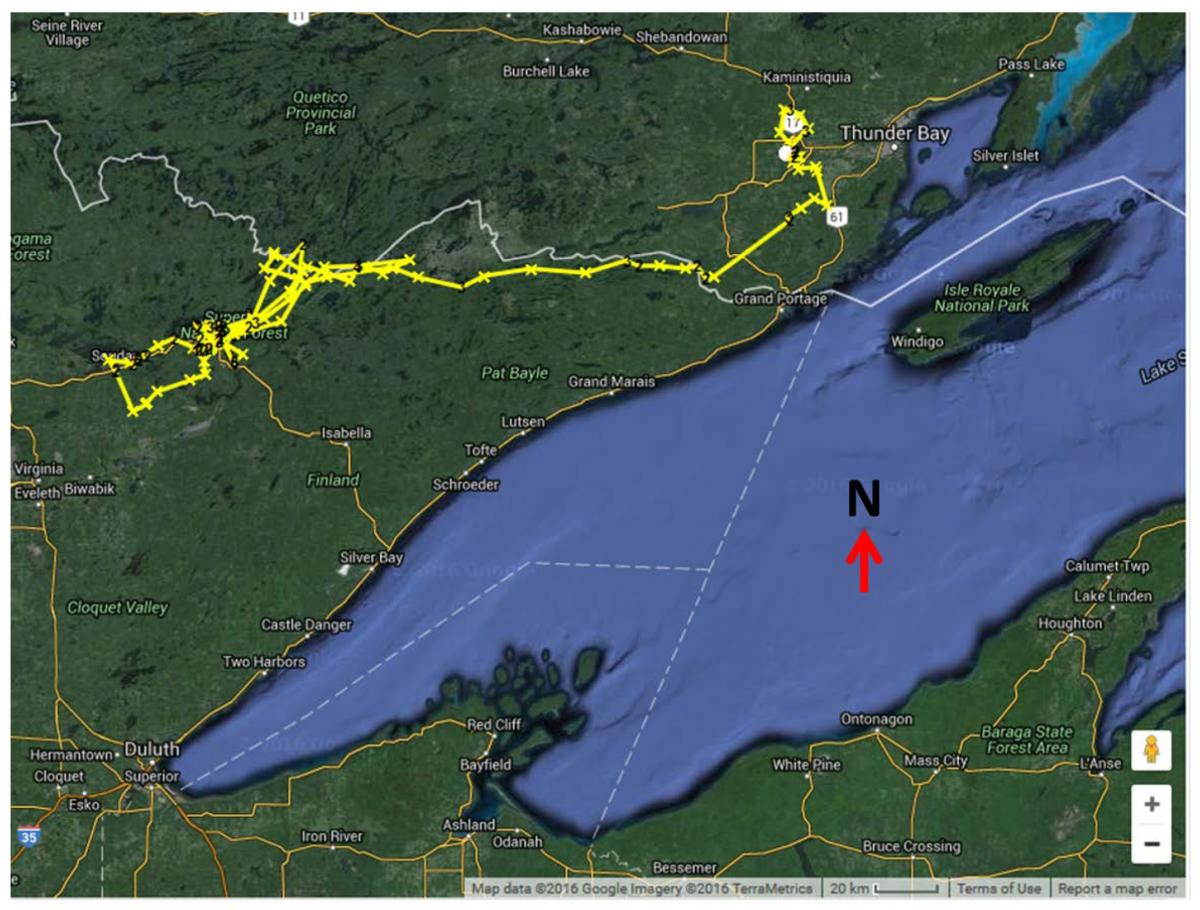To facilitate the recovery of federally endangered wolves (Canis lupus), it is critical to learn as much as possible about their behavior and habitat use. The direct study of wolves is difficult, however, due to their avoidance of humans and the inaccessibility of their wilderness territories. The USGS Northern Prairie Wildlife Research Center uses Very High Frequency (VHF) and/or Global Positioning System (GPS) radio collars to locate and monitor wolves in three areas to investigate their movements, ecology, and population.
The study is concentrated in the east-central Superior National Forest of northeastern Minnesota in cooperation with the Minnesota Department of Natural Resources. Collaborators include graduate students and other scientists with research projects in Yellowstone National Park and on Ellesmere Island, Canada. In the Superior National Forest and Yellowstone National Park, the collars are located by aerial tracking, which in winter allows observation of collared wolves and their packs, thus providing data for annual surveys of populations and long-term population trajectories. The population in the Superior National Forest has been monitored this way since 1968 and in Yellowstone since 1995. In Yellowstone, locating wolf packs via telemetry from the ground enables observers to study behavior of individual wolves and of pack-to-pack interactions. Wolf movements are also studied, such as territoriality, daily movements, and long-distance dispersal. For example, a maturing female wolf observed in the Superior National Forest moved over 200 km and then returned to her natal area.
Subsidiary information is obtained in all three study areas through capturing the wolves for collaring and using telemetry signals to determine mortality and survival, locate dens, and collect other specimens. Information gathered long-term via these methods has been useful in providing insights into wolf population persistence, wolf-deer interactions, and the role of wolves in a recent moose decline. It also allows biologists to understand what to expect with reintroduced and recovering wolf populations

GPS-collared Wolf 7246 moved from her natal area over 200 km from Minnesota into Canada and then returned to her natal area.

